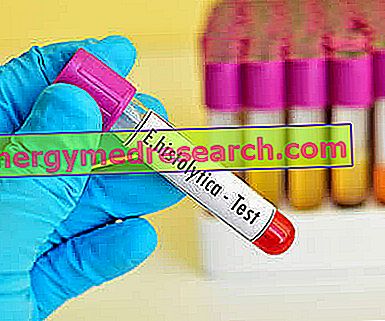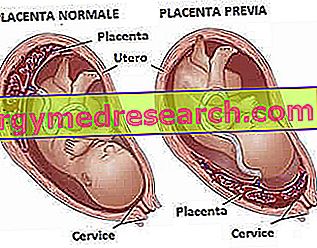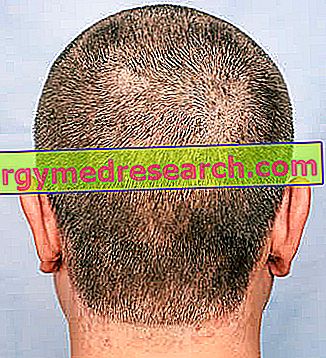Definition
Amoebiasis is a pathology of parasitic origin that mainly affects the intestine, as it is the place where the microorganism (more precisely, the protozoan) is located, responsible for the onset of the disease. However - if the protozoan reaches the bloodstream - it can also damage other organs or tissues.
Causes
Amoebiasis is caused by the protozoan Entamoeba histolytica . The parasite is transmitted mainly via the fecal-oral route, as it is present in the faeces of the sick, convalescents and chronic carriers.
The feces of these people contain amoebic cysts, which can survive in the external environment for a long time and can contaminate water and food.
Other causes of protozoan transmission are oral-anal sexual relations and direct contact between people who, in poor hygiene conditions, can have their hands dirty with faecal material.
In fact, amoebiasis is a widespread disease, especially in poor countries where the climate is hot and hygienic conditions are certainly not optimal.
Symptoms
The typical symptoms of amoebiasis vary from acute diarrhea - interspersed with periods of constipation - to severe dysentery and dehydration, but not only. In fact, patients suffering from amoebiasis may also experience symptoms such as abdominal cramps, anorexia, pain in the abdomen, flatulence, nausea, vomiting, mucorrhea, hematochezia, rectorrhagia, rectal tenesmus, fever, sweating and hives.
Furthermore, E. histolytica is able to perforate the intestinal wall and to enter the bloodstream, through which it can reach the liver causing necrotic liver abscesses.
Information on Amebiasis - Drugs and Treatment of Amebiasis is not intended to replace the direct relationship between health professional and patient. Always consult your doctor and / or specialist before taking Amebiasis - Drugs and Treatment of Amebiasis.
drugs
The drugs used to treat amebiasis are mainly antibiotics. Antidiarrheal substances, on the other hand, are not recommended, while it is essential to rehydrate patients with special saline solutions.
To prevent amoebiasis, it is sufficient to follow some basic hygiene rules, such as washing your hands thoroughly, drinking safe water and cooking food well before eating it, especially seafood, fish and vegetables.

paromomycin
Paromomycin (Humatin ®) - also known as monomicin or aminosidine - is an intestinal antibiotic and antimicrobial that was first isolated from strains of Streptomyces krestomuceticus . Paromomycin performs its action by inhibiting the protein synthesis of different types of microorganisms, among which we find, precisely, Entamoeba histolytica .
For the treatment of amebiasis, the dose of paromomycin usually used is 25-35 mg / kg of body weight, to be administered orally in three divided doses, corresponding to meals. However, if the doctor considers it necessary, he can decide to increase the amount of drug that must be used. The duration of treatment is generally 5-10 days.
Metronidazole
Metronidazole (Metronidazole B. Braun ®) is a drug belonging to the class of nitroimidazole antibiotics. It is particularly active against anaerobic bacteria and protozoa (including Entamoeba histolytica ). Metronidazole exerts its antibiotic action by interfering with the DNA synthesis of microorganisms.
It is available in different pharmaceutical formulations suitable for different administration routes, including oral and intravenous ones. When administered via the latter route, the starting dose of metronidazole usually used in adults is 1, 500 mg per day. The maintenance dose, on the other hand, is 1, 000 mg of drug per day. The administration can be carried out in a single dose, or in divided doses.
In children, on the other hand, the dosage usually used is 15-40 mg / kg of body weight per day, depending on the age of the patient. Also in this case, metronidazole can be administered either in a single dose or in divided doses.
The duration of the treatment, usually, is of seven days, but can be increased up to a maximum of ten.
tinidazole
Tinidazole (Trimonase ®) - like metronidazole - also belongs to the class of nitroimidazole antibiotics and has a similar spectrum of action. Therefore, it is particularly indicated for the treatment of infections sustained by anaerobic bacteria and for the treatment of protozoan infestations. However, the mechanism of action with which tinidazole is able to counter Entamoeba histolytica has not yet been fully clarified.
However, for the treatment of amoebiasis, the dose of tinidazole usually used orally is 500-1, 500 mg a day, or according to a medical prescription. Treatment usually lasts five days.



